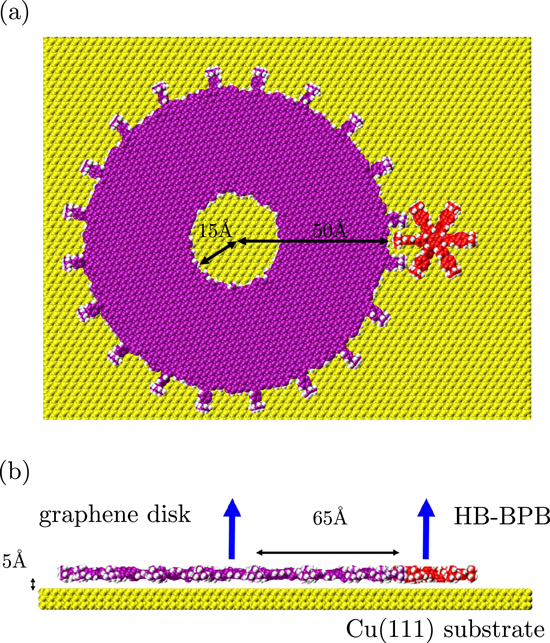On Cu(111) surface and in interaction with a single hexa-tert-butylphenylbenzene molecule-gear, the rotation of a graphene nanodisk was studied using the large-scale atomic/molecular massively parallel simulator molecular dynamics simulator. To ensure a transmission of rotation to the molecule-gear, the graphene nanodisk is functionalized on its circumference by

On Cu(111) surface and in interaction with a single hexa-tert-butylphenylbenzene molecule-gear, the rotation of a graphene nanodisk was studied using the large-scale atomic/molecular massively parallel simulator molecular dynamics simulator. To ensure a transmission of rotation to the molecule-gear, the graphene nanodisk is functionalized on its circumference by
